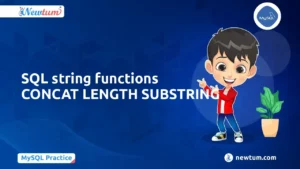In this tutorial, we will explore the Python program to create a long multiline string using triple quotes. We will explore the step-by-step process of creating a multiline string using triple quotes and demonstrate how to display the multiline string on the output screen. By the end of this blog, you will have a solid understanding of multiline strings and the benefits they provide when working with large text blocks or formatted data.
Multiline strings play a significant role in many programming scenarios, allowing developers to work with and represent text that spans across multiple lines. In Python, one convenient way to create multiline strings is by using triple quotes. The use of triple quotes enables us to define strings that preserve line breaks and formatting, making them a valuable tool for tasks such as representing long paragraphs, docstrings, or data with complex formatting requirements.
Let’s delve deeper and write a code to create a long multiline string in Python using triple quotes.
Python Program to Create a Long Multiline String Using Triple Quotes
# Create a Long Multiline String Using triple quotes in python my_string = '''Welcome to the newtum''' print(my_string)
Explanation of the code:
Variable Initialization
In this step, we initialize a variable called my_string and assign it a multiline string using triple quotes. The string is assigned to the variable in a way that spans multiple lines.
Display the Multiline String
We utilize the print() function to display the contents of the my_string variable. By doing so, we can visualize the multiline string on the output screen.
Output:
Welcome
to the
newtumThe output displays the multiline string created using triple quotes. Each line of the string is printed on a new line, maintaining the line breaks as defined in the string. The output showcases the text “Welcome,” “to the,” and “newtum” each on a separate line. This demonstrates the functionality of using triple quotes to create and display multiline strings in Python.
Here are a few alternate methods:
Concatenating Strings:
You can concatenate multiple strings using the + operator to create a multiline string. Each line is represented as a separate string, and you combine them together.
Using Join Method:
You can use the join() method to join a list of strings into a single string, specifying a delimiter (e.g., newline character) between each line.
Using \ (Backslash) method
It offers a balance between readability and simplicity, making it an efficient choice, particularly for longer strings or when you need to manipulate specific lines within the string.
In this code, we used triple quotes to create multiline strings as it provides a clear and concise way to represent multiline strings. The code is more readable and less cluttered, as line breaks are directly represented within the string. This method allows you to maintain the formatting of the text as it appears in the code. It minimises the chances of errors when representing multiline strings.
Conclusion:
In this blog, we explored the concept of multiline strings in Python using triple quotes. We learned that triple quotes allow us to create strings that span across multiple lines, making it easier to represent and work with long paragraphs, formatted text, or data that extends beyond a single line.
Using multiline strings can enhance code readability and maintainability, as complex text can be organized in a more natural and intuitive manner. It provides a convenient way to include line breaks, indentation, or special characters within the string.
Whether you are working on documentation, data processing, or text manipulation tasks, the ability to create and utilize multiline strings using triple quotes is a valuable skill to have in your Python programming toolkit.
Frequently Asked Questions
Q: What are some use cases for multiline strings?
A: Multiline strings are useful in scenarios where you need to represent long paragraphs, multiline comments, docstrings, or any text that includes line breaks. They are particularly handy for preserving the formatting of text, such as poetry or code snippets within strings.
Q: Can I perform string operations on multiline strings?
A: Yes, multiline strings can be treated just like any other string in Python. You can apply string operations and methods to manipulate, search, or format the text within the multiline string.
Q: How do I display a multiline string on the output screen?
A: You can use the print() function to display a multiline string on the output screen. When you print a multiline string, it will be displayed with line breaks preserved, allowing you to see the text in the desired format.
Q: Can I include variables or expressions within a multiline string?
A: Yes, you can include variables or expressions within a multiline string using string formatting techniques such as f-strings, % operator, or format() method. This allows you to dynamically insert values or results into the multiline string.
Q: How do I escape special characters within a multiline string?
A: To include special characters or escape sequences within a multiline string, you can use the backslash \ followed by the desired character. For example, to include a line break, you can use \n.



